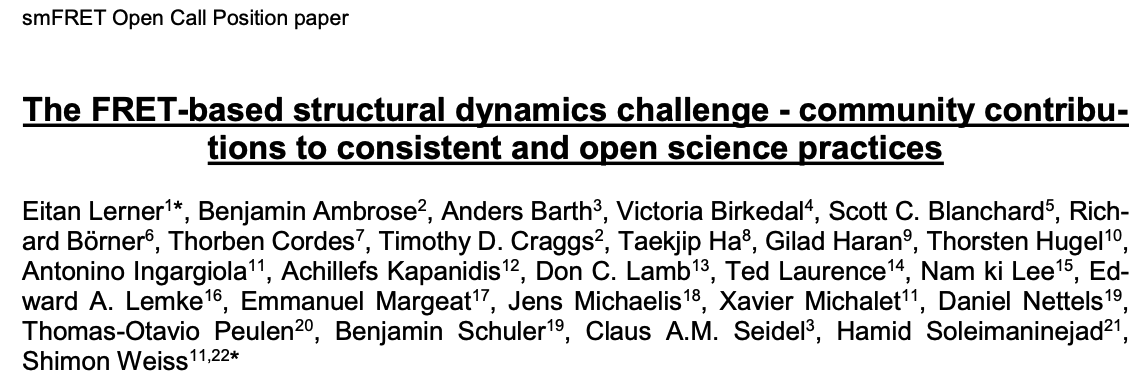
smFRET Open Call Position Paper
Many members of the FRET community have come together to set the groundwork for FRET to become a recognized and routine tool for dynamic structural biology. In the position paper titled “The FRET-based structural dynamics challenge – community contributions to consistent and open science practices”, we assess the state of the field, outline ‘soft recommendations’ for experiments and analysis and endorse the adaption of ‘open science’ practices. These efforts have been initiated and organized by Eitan Lerner and Shimon Weiss.
The preprint of the paper is hosted on arXiv.org: https://arxiv.org/abs/2006.03091
Abstract
Single-molecule Förster resonance energy transfer (smFRET) has become a mainstream tech- nique for probing biomolecular structural dynamics. The rapid and wide adoption of the technique by an ever-increasing number of groups has generated many improvements and variations in the technique itself, in methods for sample preparation and characterization, in analysis of the data from such experiments, and in analysis codes and algorithms. Recently, several labs that employ smFRET have joined forces to try to bring the smFRET community together in adopting a con- sensus on how to perform experiments and analyze results for achieving quantitative structural information. These recent efforts include multi-lab blind-tests to assess the accuracy and preci- sion of smFRET between different labs using different procedures, the formal assembly of the FRET community and development of smFRET procedures to be considered for entries in the wwPDB. Here we delve into the different approaches and viewpoints in the field. This position paper describes the current “state-of-the field”, points to unresolved methodological issues for quantitative structural studies, provides a set of ‘soft recommendations’ about which an emerging consensus exists, and a list of resources that are openly available. To make further progress, we strongly encourage ‘open science’ practices. We hope that this position paper will provide a roadmap for newcomers to the field, as well as a reference for seasoned practitioners.
